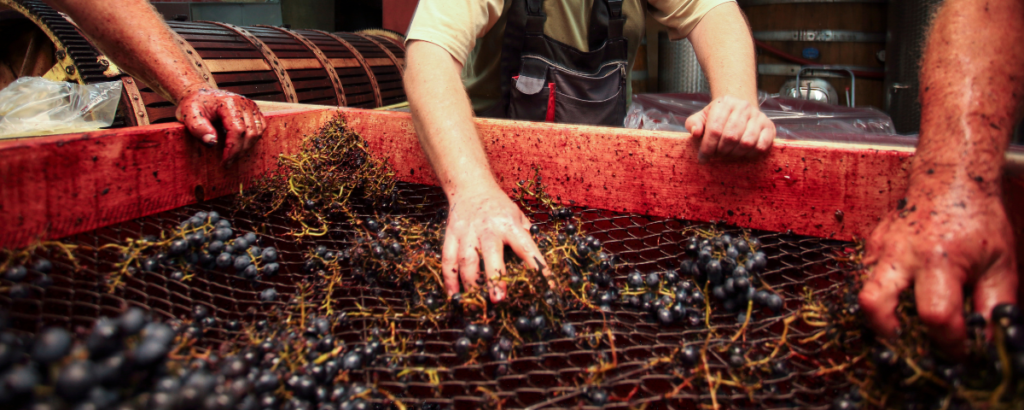
The Latest Generation of De-stemming Machines: How to Reduce Vendor Waste by 20% During Harvesting
Destemming is a fundamental process during the grape harvest, separating the grapes from the stems.
As agricultural technology continues to evolve, the latest destemming machines are revolutionising the management of this crucial step, helping to improve efficiency and reduce waste.
In this article, we will explore how these innovative machines are reducing waste by 20 per cent, an improvement that brings both environmental and economic benefits.
What is Destemming and Why is it So Important?
Destemming is the process of separating the grapes from the stems, a woody part that does not directly contribute to the quality of the wine. This step usually takes place immediately after the harvest, before the grapes are turned into must.
The quality of the destemming is crucial to avoid contamination of the must with undesirable vegetable components, which could negatively affect the flavour and characteristics of the wine.
The Crucial Role of De-stemming Machines
De-stemming machines are designed to optimise this process, reducing grape loss as much as possible and minimising waste.
These modern tools are equipped with advanced technologies that allow the grapes to be separated from the stalks with greater precision than older machines, increasing overall efficiency during the grape harvest.
The Innovation of Latest Generation Destemming Machines
The latest generation of de-stemming machines are characterised by highly sophisticated mechanical and technological systems. Among the most significant innovations are:
- Vibration and Dynamic Separation Systems: Controlled vibrations allow the grapes to be separated from the stems in a gentle manner, reducing the risk of damaging the grapes and improving the quality of the final product.
- Sensor Technologies and Artificial Intelligence: Some machines are equipped with sensors that constantly monitor the quality of the destemming and automatically adjust settings according to grape conditions. This leads to an even more efficient and precise process.
- Lightweight and Resistant Materials: The new machines are made of materials that reduce weight without compromising strength, improving the manoeuvrability and durability of the machinery.
Reducing Waste by 20%: A Sustainable Advantage
One of the main benefits of using state-of-the-art de-stemming machines is the significant reduction in food waste. According to recent studies, these advanced technologies can reduce waste during the grape harvest by 20%. But how is this achieved?
- Less loss of berries: Thanks to the precision of modern machines, more berries are kept intact, minimising the number of grains that end up in the stems.
- Efficiency in recovery: New technologies are designed to optimise grape recovery, allowing more precise separation leading to fewer losses during processing.
- Minimisation of plant residues: High technology allows finer and more accurate separation between grapes and stems, with less plant residue ending up in the winemaking process.
These improvements result not only in a greater quantity of usable product, but also in reduced waste and improved management of agricultural resources.
The Environmental Impact of Waste Reduction
The adoption of state-of-the-art destemming machines also has a positive impact on the environment. Reducing food waste means reducing the amount of material to be disposed of, which contributes to reducing the ecological footprint of wine production. Waste that is no longer generated is a resource that does not have to be treated and disposed of, thus reducing the negative impact on the land.
In addition, improved agricultural practices and more effective management of materials during harvesting help preserve the local ecosystem, creating more favourable conditions for growing grapes in the long term.
Economic Benefits: How Technology Reduces Costs
In addition to the environmental benefits, the introduction of advanced destemming machines has tangible economic advantages for farms. The reduction in food waste means that more grapes are actually processed into the final product, increasing the overall harvest yield. This leads to:
- Improved wine quality: Less contamination with unwanted plant components results in a higher quality must, with a positive impact on the quality of the finished wine.
- Saved disposal costs: With less waste to handle, farms reduce their waste disposal costs.
- Increased operational efficiency: Modern machines operate faster and more accurately, reducing working time and increasing overall productivity.
The Evolution of Destemming
The latest generation of de-stemming machines are transforming the wine industry, reducing food waste and optimising the harvesting process. The precision and efficiency of these advanced technologies not only improve wine quality, but also offer significant economic and environmental benefits.
Investing in modern de-stemming machines is a key step towards more sustainable agriculture and more efficient wine production. If you are a wine producer or wine enthusiast, now is the time to explore how these solutions can improve your work and contribute to the success of your business.
Join the discussion and stay up-to-date: We invite you to interact with our blog to discover more insights and articles on innovations in the wine industry. We do not accept comments, but we welcome your feedback and questions via email.



